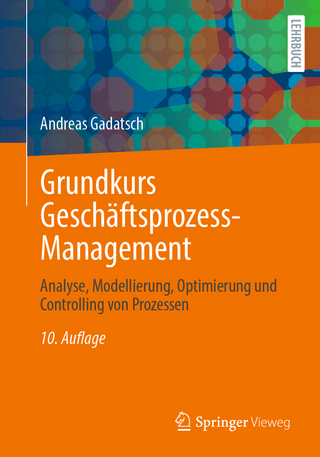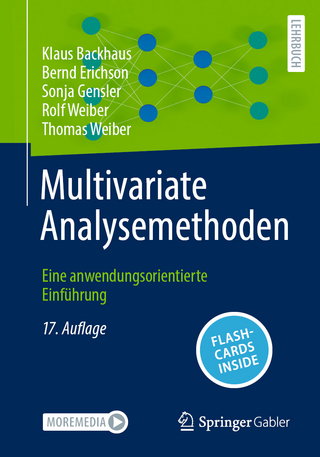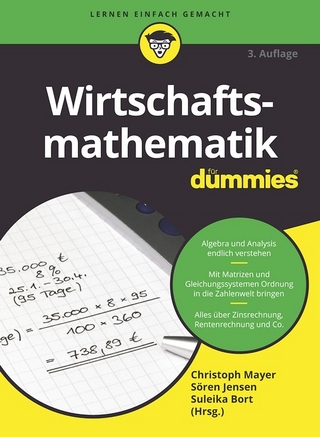
Economic Systems Analysis and Assessment
Wiley-Interscience (Verlag)
978-0-470-13795-6 (ISBN)
An Authoritative Introduction to a Major Subject in Systems Engineering and Management This important volume fills the need for a textbook on the fundamentals of economic systems analysis and assessment, illustrating their vital role in systems engineering and systems management. Providing extensive coverage on key topics, it assumes no prior background in mathematics or economics in order to comprehend the material.
The book is comprised of five major parts:
Microeconomics: a concise overview that covers production and the theory of the firm; theory of the consumer; market equilibria and market imperfections; and normative or welfare economics, including imperfect competition effects and consumer and producer surplus
Program Management Economics: discusses economic valuation of programs and projects, including investment rates of return; cost-benefit and cost-effectiveness analysis; earned value management; cost structures and estimation of program costs and schedules; strategic and tactical pricing issues; and capital investment and options
Cost Estimation: reviews cost-estimation technologies involving precedented and unprecedented development, commercial-off-the-shelf (COTS) software, software reuse, application generators, and fourth-generation languages
Strategic Investments in an Uncertain World: addresses alternative methods for valuation of firms including Stern Stewart's EVA, Holt's CFROI, and various competing methodologies
Contemporary Perspectives: covers ongoing extensions to theory and practice that enable satisfactory treatment of the increasing returns to scale, network effects, and path-dependent issues generally associated with contemporary ultra-large-scale telecommunications and information networks
Also discussed in this comprehensive text are normative or welfare economics and behavioral economics; COCOMO I and II and COSYSMO as examples of a cost model; and options-based valuation models and valuation of information technology intensive enterprises.
Economic Systems Analysis and Assessment serves as an ideal textbook for senior undergraduate and first-year graduate courses in economic systems analysis and assessment, as well as a valuable reference for engineers and managers involved with information technology intensive systems, professional economists, cost analysts, investment evaluators, and systems engineers.
Andrew P. Sage, PhD, is University Professor and First American Bank Professor at George Mason University in Fairfax, Virginia. He is a Fellow of the IEEE, the American Association for the Advancement of Science, and International Council on Systems Engineering (INCOSE). The winner of numerous awards, Dr. Sage is the editor of the Wiley Series in Systems Engineering and Management and the founding editor of the INCOSE journal Systems Engineering. He is a member of the National Academy of Engineering. William B. Rouse, PhD, is the Executive Director of the Tennenbaum Institute at the Georgia Institute of Technology, and a faculty member in the School of Industrial and Systems Engineering and the College of Computing. A former CEO of two innovative software companies, he has four decades of experience in research, education, engineering, management, and marketing. Dr. Rouse has written hundreds of articles and book chapters and has authored many books. He is a member of the National Academy of Engineering and a fellow of several professional societies.
PREFACE. Chapter 1 Introduction to Economic Systems Analysis and Assessment: Cost, Value, and Competition in Information and Knowledge Intensive Systems, Organizations, and Enterprises.
1.1 Inroduction.
1.2 A Framework for Systems Engineering and Management.
1.3 Theory of the Firm.
1.4 Theory of the Consumer.
1.5 The Interaction of the Theories of the Firms and Consumers: Microeconomic Models of Economic Activity.
1.6 Welfare or Normative Economics.
1.7 Program and Program Management Economics.
1.8 Contemporary Issues Concerning Information and Information Technology Economic.
1.9 Economic Pitfalls in the Engineering of Systems.
1.10 Summary.
Chapter 2 Production and the Theory of the Firm.
2.1 Introduction.
2.2 The Production Function.
2.3 Multiproduct Firms and Multiproduct Production Functions.
2.4 Classical Theory of the Firm.
2.5 Imperfect Competition.
2.6 Summary.
Chapter 3 The Theory of the Consumer.
3.1 Introduction.
3.2 Economic Utility Theory and Its Axioms.
3.3 Property of Utility Functions.
3.4 The Fundamental Problem of the Consumer.
3.5 Sensitivity and Substitution Effects.
3.6 Summary.
Chapter 4 Supply-Demand Equilibria and Microeconomic Systems Analysis and Assessment Models.
4.1 Introduction.
4.2 Basic Supply-Demand Equilibrium for a Single Good.
4.3 General Supply-Demand Equilibrium Conditions.
4.4 Extensions to General Equilibrium to Include Market Interdependencies.
4.5 Microeconomics Models.
4.6 Summary.
Chapter 5 Normative or Welfare Economics, Decisions and Games, and Behavioral Economics.
5.1 Introduction.
5.2 Pareto Optimality Under Perfect Competitive Conditions.
5.3 External Effects and Imperfect Competition-Public Goods.
5.4 External Effects and Imperfect Competition-Nonindependent Production and Consumption.
5.5 Welfare Maximization and Social Choice.
5.6 Summary.
5.7 Selected Bibliography.
Chapter 6 Cost-Benefit and Cost-Effectiveness Analysis and Assessments.
6.1 Introduction.
6.2 The Time Value of Money.
6.3 Identification of Costs and Benefits.
6.4 The Identification and Quantification of Effectiveness.
6.5 A Guide to Cost-Benefit Analysis.
Chapter 7 Cost Assessment.
7.1 Model-Based Parameters for Productivity.
7.2 Early Models for Estimation of Costs, Including Effort and Schedule.
7.3 The Constructive Cost Model.
7.4 Summary.
CHAPTER 8 APPROACHES TO INVESTMENT VALUATION.
8.1. Microeconomics.
8.2. The Investment Problem.
8.3. Investment Valuation.
8.4. Summary.
CHAPTER 9 REAL OPTIONS FOR INVESTMENT VALUATION.
9.1. Nature of Options.
9.2. Option Pricing Theory.
9.3. Option Calculator.
9.4. Strategic Metrics.
9.5. Investment Decision Making.
9.6. Value-Centered R&D.
9.7. Summary.
CHAPTER 10 CONTEMPORARY PERSPECTIVES.
10.1. Introduction.
10.2. Evolutionary Economics.
10.3. Path Dependence and Network Effects.
10.4. Intellectual Capital.
10.5. Value of Information.
10.6. Investing in Humans.
10.7. Summary.
INDEX.
| Reihe/Serie | Wiley Series in Systems Engineering and Management ; 1 |
|---|---|
| Zusatzinfo | Graphs: 200 B&W, 0 Color |
| Sprache | englisch |
| Maße | 164 x 243 mm |
| Gewicht | 771 g |
| Themenwelt | Mathematik / Informatik ► Mathematik ► Finanz- / Wirtschaftsmathematik |
| Technik ► Elektrotechnik / Energietechnik | |
| Wirtschaft ► Betriebswirtschaft / Management ► Finanzierung | |
| ISBN-10 | 0-470-13795-9 / 0470137959 |
| ISBN-13 | 978-0-470-13795-6 / 9780470137956 |
| Zustand | Neuware |
| Haben Sie eine Frage zum Produkt? |
aus dem Bereich


